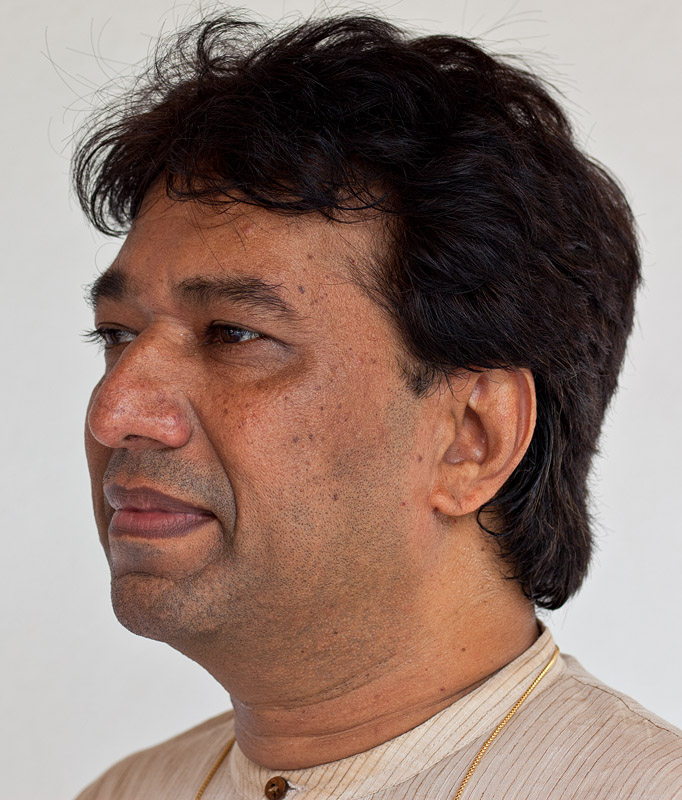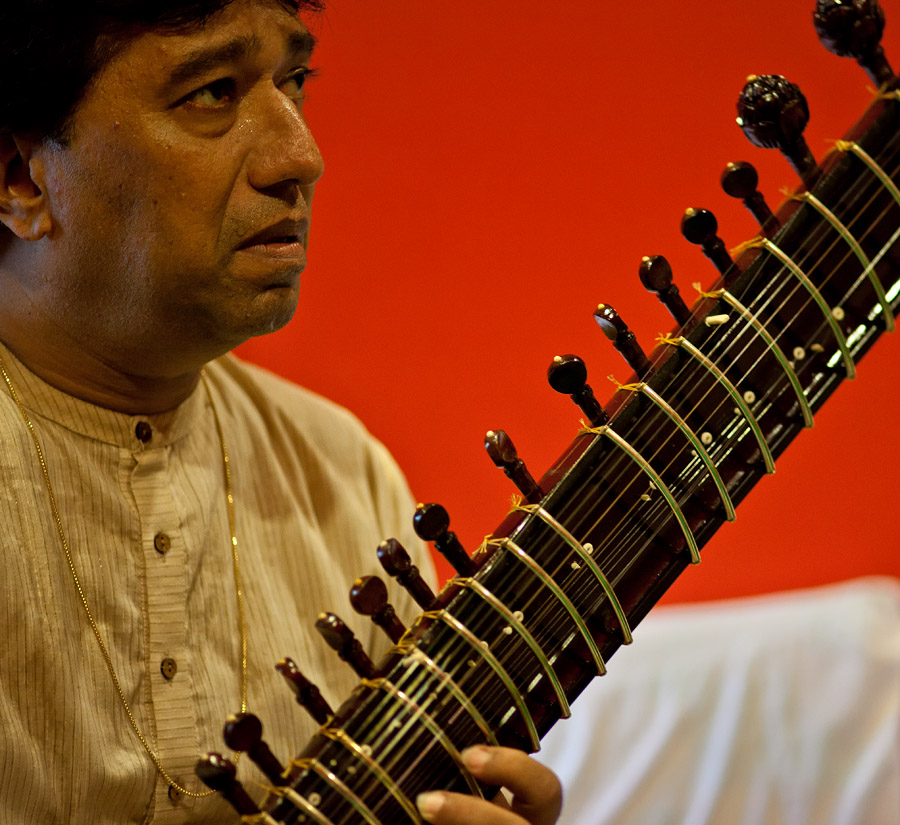Goa‘s contribution to the world of Indian classical music has been extraordinary. Our traditional strengths and focus have been in vocal music. In the instrumental department, we have produced world-class sarangiyas, violinists, and percussionists in the distant past. Tantuvadyas such as the sitar and sarod have historically not generated much enthusiasm in the Goan musical milieu.
For the past 25 years, Chhote Rahimat Khan, Head of the Sitar faculty at the Kala Academy in Panjim, has been training Goans on the sitar and developing local talent in this area. Chhote hails from Dharwad and grew up in a family of traditional musicians. A brief sketch is available here.
A couple of afternoons ago, I spent an enjoyable hour or so with the ustad in his music room at the Kala Academy. These are images from that session, which included an impromptu recital by Chhote on his beautiful custom-designed Made-in-Miraj sitar.

Chhote Rahimat Khan
5D Mark II, Zeiss ZE 100 f/2 Makro Planar

Chhote with his custom-designed sitar
5D Mark II, TS-E 24L II

The ustad in his music room at Kala Academy in Panjim
5D Mark II, Zeiss ZE 100 f/2 Makro Planar
I had my Tilt-Shift lens with me and couldn’t resist doing a portrait of Chhote‘s sitar. These are a couple of instances of the Scheimpflug Principle in practice.

Scheimpflug principle: downward tilt of lens brings the frets plane into sharp focus
5D Mark II, TS-E 24L II

Upward tilt of the lens enables selective focus
5D Mark II, TS-E 24L II





Arun,
It is not a major crop – I was fairly close to him. It is not a focus & recompose either, since this image was taken at the lens’ widest aperture of f/2.
Is #3 focus and recompose? Or is it a fairly major crop?
Dear Rajan,
This is something I never knew about Goa’s contribution in the music field.
Your photo tips and the details of your lens selection enables me to learn the finer points of photography and utilise them in my own amateur shots.
Thank you.
Con
[…] the original post here: Chhote Rahimat Khan Posted in General Tags: chhote rahimat khan, chhote-rahimat, classical-music, custom, dharwad, […]
[…] Go here to see the original: Chhote Rahimat Khan » Photo Blog by Rajan Parrikar […]